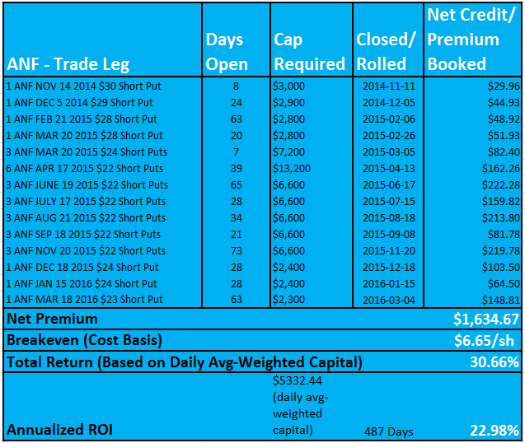Why Winning 90 Percent of Your Trades Is Not Enough
(Why You Should Try to Win Them All)
One of the questionable "me too" marketing messages I see a ton in option trading circles is the weird claim that someone's system has a 90% winning track record.
Even if that were true, so what?
It reminds me of that quote often attributed to Mark Twain:
"There are three kinds of lies - lies, damned lies, and statistics."
Because a 90% success rate - even if it's true - tells you nothing about the rewards of success or the consequences of failure.
For instance . . .
What the Stock Market is Like for a Lot of People

Imagine you and Mr. Market play this game where you think of a number from 1 to 10 and he tries to guess it.
He gets 10 tries.
Each time Mr. Market guesses incorrectly, he gives you a new, crisp $5 bill.
Nice.
But if (or rather when) he does guess correctly, he gets to kick you as hard as he can in the groin.
Sounds like a fun game - for one of you at least.
Factually Selective
A service, product, or system with a 90% success rate (again, assuming that it's actually true) may be perfectly valid.
But, contrarian that I am, you better believe I'm a lot more interested in knowing what happens the other 10% of the time (or more) when that service, product, or system doesn't work.
And if someone's trying to convince me they've got this holy grail solution, but they conveniently neglect to let me know what happens when things don't go according to plan . . .
Well, that's kind of a red flag right there, isn't it?
For a list of more red flags, check out this popular site article on scam services.
I go the other route.
I probably talk more about the trades that don't go according to plan than all the no drama ones that perform like clockwork.
Why?
Because our "bad" trades and investments are the number one threat to our portfolio.
If it weren't for those, building wealth and increasing our investment income would be simple, relaxing, predictable, and easy.
That's why we need a plan and an ability to make money on all our trades - even the ones that viciously turn on us.
No matter what percentage that turns out to be.
Winning Trades No Matter What
Case in point - during the first week of March 2016, I exited three long running trades that were all initially "losers."
And not small losers either.
Specifically, I sold puts (i.e. insured the share price) on three stocks that all traded significantly lower.
#1 - ANF
On November 3, 2014, with ANF trading at $32.86, I "insured" the stock @ $30/share.
The stock would eventually hit a closing low of $16.45/share (a 49.94% collapse).
But instead of a catastrophic loss, I walked away with 30.66% returns over the 487 day holding period.
(Over the same time period, the S&P 500 actually lost 0.88%.)
#2 - COH
On May 18, 2015, with COH trading at $37.62, I "insured" the stock @ $37/share.
At its low point the stock would drop 27.06%.
But again, not only was I able to avoid a big loss, I still made 12.57% annualized returns over 291 days (while the broader market fell 6.07% over the same time period.)
#3 - PG
Finally, on March 2, 2015, with PG trading at $85.00 even, I "insured" the stock at $85/share.
PG would go on to plunge 19.93% before the stock finally bottomed.
But when I finally exited in March 2016, exactly one year after I entered the trade, I did so with an overall 3.03% gain.
Not much, I know, but the stock still hadn't "come back" all the way, and compare it to the $SPX - it was down 6.18% over the same time period.
How is This Possible?
So how is it possible to take these potentially catastrophic trades and walk away with more money than you started with?
And sometimes a lot more money?
How is it possible to make money on trades even when you're dead wrong on what you expect the underlying stock is going to do?
The very short answer is:
- Use a customized, structurally advantaged, and very forgiving strategy.
- Have a detailed, systematic, and proven trade management plan in place.
The longer version involves signing up for the Sleep at Night High Yield Option Income Course when it's available.
Tweet
Follow @LeveragedInvest
HOME : Stock Option Analysis and Articles : Why Winning 90 Percent of Your Trades Is Not Enough

>> The Complete Guide to Selling Puts (Best Put Selling Resource on the Web)
>> Constructing Multiple Lines of Defense Into Your Put Selling Trades (How to Safely Sell Options for High Yield Income in Any Market Environment)
Option Trading and Duration Series
Part 1 >> Best Durations When Buying or Selling Options (Updated Article)
Part 2 >> The Sweet Spot Expiration Date When Selling Options
Part 3 >> Pros and Cons of Selling Weekly Options
>> Comprehensive Guide to Selling Puts on Margin
Selling Puts and Earnings Series
>> Why Bear Markets Don't Matter When You Own a Great Business (Updated Article)
Part 1 >> Selling Puts Into Earnings
Part 2 >> How to Use Earnings to Manage and Repair a Short Put Trade
Part 3 >> Selling Puts and the Earnings Calendar (Weird but Important Tip)
Mastering the Psychology of the Stock Market Series
Part 1 >> Myth of Efficient Market Hypothesis
Part 2 >> Myth of Smart Money
Part 3 >> Psychology of Secular Bull and Bear Markets
Part 4 >> How to Know When a Stock Bubble is About to Pop




